Located about 600 miles off the coast of Ecuador, the Galapagos Islands have been a closely guarded natural secret for millions of years. The archipelago evolved into an all-star home for plants and animals during that time. Sometime in the 19th century, a handful of swashbuckling pirates and intrepid explorers began arriving at the Galapagos Islands. The most famous early visitor was Charles Darwin, a young naturalist who spent 19 days in 1835 studying the island’s flora and fauna. In 1859, Darwin published On the Origin of Species, introducing the world to his theory of evolution and the Galapagos Islands.
Since then, the news about these islands and their stunning beauty has been steadily growing. In 1959, Galapagos became Ecuador’s first national park, and in 1978, it was declared a UNESCO World Heritage Site. Today, more than 275,000 people visit Galapagos each year to see these incredible animals and landscapes for themselves.
Although you think the Galapagos Islands will be unique, they usually exceed expectations. It’s a place where lizards swim, birds walk, and humans – for once – don’t take center stage.
Reason for visit
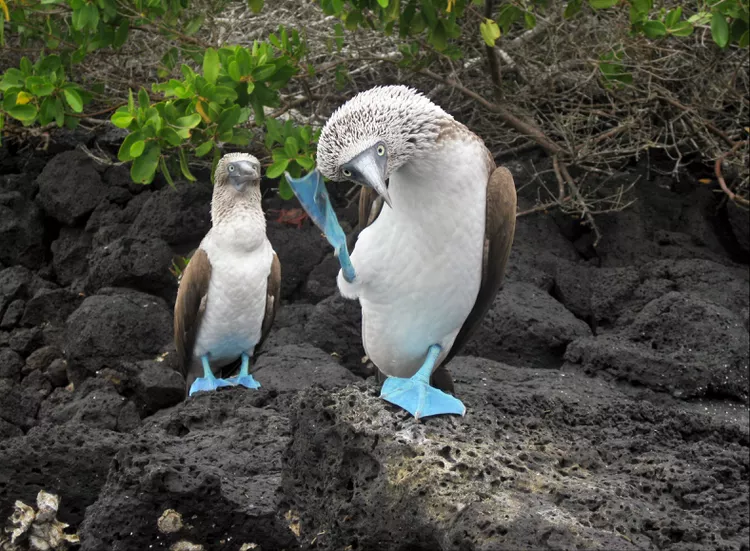
Biodiversity attracts more than 100,000 visitors a year to these remote islands, which were unknown to the world until 1535. In the absence of human influence, the island’s flora and fauna and the surrounding Marine life flourished for thousands of years, evolving into unique species found nowhere else in the world, such as the charismatic giant turtle and blue-footed booby. In addition to seeing the island’s leading stars, many tourists enjoy the beautiful beaches and choose the Galapagos Islands as their honeymoon destination.
This is also one of the top scuba diving destinations in the world, so spending time in or out of the water is a must, whether that means you’re ready to jump in with your snorkel and swim with sea lions or just happy to enjoy the view from the deck of your adventure cruise ship. Full of natural beauty, the Galapagos is a once-in-a-lifetime destination for many, where the wonders of the natural world are waiting to amaze you.
Best Time to Visit
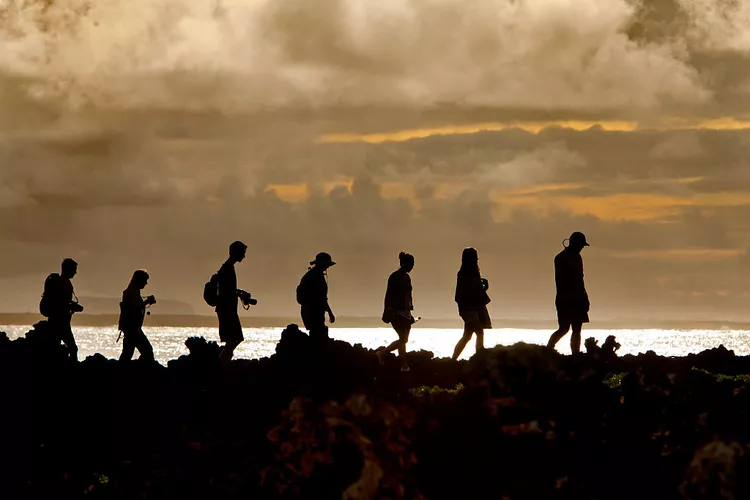
There is no wrong time to visit the Galapagos Islands. This adventure will surely be unique and fabulous no matter what time of year you go. June to December are cool and dry months. Even though it’s the dry season, guarana (or light smokey rain) is still possible, especially in December, when skies can be cloudy and gray.
January to May are warm and humid, but the rain creates bright blue skies between showers – perfect for photography. March and April are the hottest and wettest months, while August is the coolest.
Due to the strong ocean currents on the archipelago, the water temperature changes throughout the year. Between June and December, cold ocean currents dominate, and water temperatures drop. During these months, diving may require a wetsuit (which may be provided by your boat or hotel). The upside, however, is that the cold snap brings in lots of plankton, attracting hungry Marine life.
If you plan to visit the Galapagos to see a specific species, talk to a travel agent and choose a month and itinerary that works best for you. Some species are seasonal, and many are found only on specific islands. For example, the wavy albatross, known as the Galapagos albatross, is not a full-time resident. These birds only mate in spring and summer.
How to get there
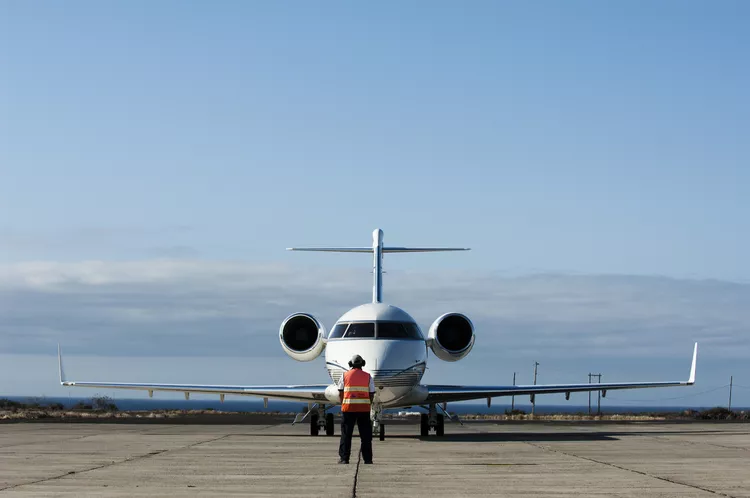
Flights to the Galapagos Islands depart daily from Quito or Guayaquil on the Ecuadorian mainland. There are many flights from the United States to both cities. Quito has a better selection of hotels, and, in general, the city’s colonial center, which was declared a UNESCO World Heritage Site in 1978, is more appealing. It’s also home to museums, shopping centers, and restaurants that can quickly be filled for days. However, Quito is over 9,000 feet above sea level, so that altitude can be problematic for travelers from lower altitudes. Sweltering Guayaquil is Ecuador’s largest city and sits at sea level, so altitude isn’t an issue. However, hotel and restaurant options in Guayaquil are much more limited.
If you’re booking your flight from mainland Ecuador to the Galapagos Islands, remember that there are two airports on two islands in the archipelago. Santa Cristobal Airport is on the island of the same name. Seymour Airport runs entirely on solar and wind power. It is located on Baltra Island, across a narrow strait from Santa Cruz Island. Be sure to book tickets to the island you are visiting or where your ship is departing and returning.
By Land or By Sea
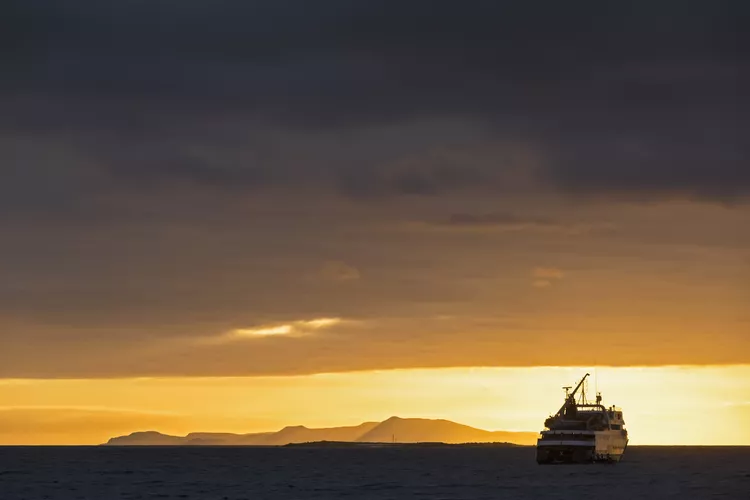
When you visit the Galapagos Islands, the first decision you have to make is also the most difficult. Do you want to stay in a hotel on one of the three inhabited islands and explore the other islands and regions by day trip boat? Or would you like to live on a ship that provides accommodation and inter-island transport services? When choosing between land and sea transport, there are three main factors: cost, time management, and access.
A trip to the Galapagos Islands can be expensive. However, if you base it on land, creating a cheaper experience is more accessible. Today, there are hotels and restaurants in a wide range of price points on the Islands of Santa Cristobal, Santa Cruz Isabela, and Floreana. Prices for experienced boats also vary. However, all but the humblest boats still add up to more than an overland holiday.
If you choose to holiday on land, be prepared to spend much time getting on the boat from your hotel to your destination for the day and back to your house. On the other hand, most of the sailing of the experience ship takes place at night, when the passengers sleep in the ship’s cabins. This means that passengers wake up to a new destination, ready for a full day of exploration. Since overland expeditions are limited to five islands that can be reached in one day, travelers cannot visit the more distant islands included in the boat itinerary.
Book a cruise unless you’re afraid of sailing, suffer from seasickness, or hate being on a boat for a week. You can reduce the time you spend running back and forth, and you can see as many different areas of the Galapagos Islands as possible.
Boat Tours
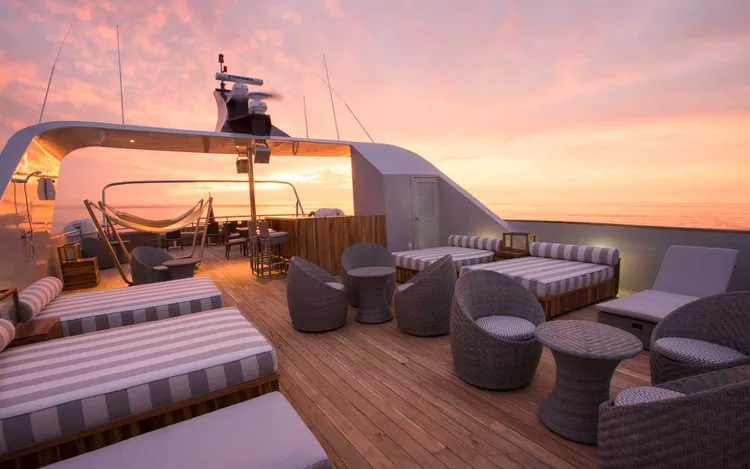
Most experienced boats offer 5 to 8-day trips with fixed departure dates and routes. Galapagos National Park officials designated the route to reduce congestion and environmental stress. Your boat will offer north or south itineraries (sometimes called East and West), alternating weekly. Both include fantastic land excursions, plenty of time in the water, and opportunities to see the famous flora and fauna of the Galapagos.
Boats on the Galapagos Islands can carry a maximum of 100 passengers, but most have fewer than that. The benefits of taking a smaller capacity vessel are a more intimate onboard experience and faster transfer time between the leading and rubber boats. Smaller ships also tend to have more character and history. Don’t worry if you’re traveling with a large group, as ships with larger capacities tend to have more onboard services, such as guest lectures and medical facilities.
Ecoventura is another excellent operator with several boats that can carry up to 20 passengers at a time. Two naturalists will take guests ashore and explain each plant and animal in detail.
Scuba divers who want to focus on underwater adventures also have a few options on the Galapagos Islands. The Galapagos Sky, Galapagos Invader III, and Galapagos Master are all ships designed for scuba divers. They sail all the way to the unvisited northernmost island in the archipelago, where deep, cold, water-filled dives give them time to swim with manta rays, whale sharks, sunfish, and hammerhead sharks. Please note that these are only for experienced divers.
Best Hotels & Resorts
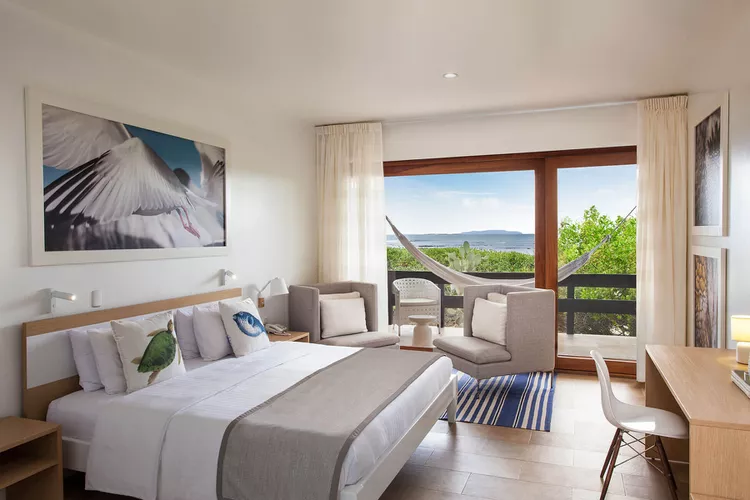
A variety of hotels can be found on the islands of Santa Cruz and Santa Cristobal, and several ships sail outside their ports. Be sure to book a hotel near the port (not on high ground) to be close to the ship’s boarding point on a day trip.
For example, the 19-room Golden Bay Galapagos Islands sit on the harbor of Santa Cristobal Island. You can watch sea lions frolic on a small beach directly in front of the hotel, and day cruises depart from a pier less than a three-minute walk. Book the Corner suite, which features a living room bathtub and glass walls that slide open to remove all barriers between you and nature outside. Meanwhile, the Angermeyer Beachfront Hotel is in Puerto Ayora on Santa Cruz Island. The hotel’s newest room is cleverly designed inside a stranded wooden boat.
Alternatively, book a hotel that owns and operates its boats to ensure seamless service standards and the most practical and convenient itinerary. For example, the unbeatable Pikaia Lodge in the highlands of Santa Cruz Island has a boat and offers guests packages, including land and sea adventures.
The Finch Bay Galapagos Hotel in Puerto Ayora on Santa Cruz Island also has a yacht called the Sea Lion. The boat can accommodate up to 20 passengers and two guides (many other day cruises carry 16 passengers and only one guide). The Sea Lion’s itinerary includes all five islands that allow day boat Tours.
For travelers who can afford to spend days searching for deals after they arrive, deals can sometimes be found at the last minute. However, the Galapagos Islands are a significant tourist destination, so booking is recommended. Dive boats, in particular, tend to fill up quickly because there are so few of them.
If you stay overnight in Quito or Guayaquil, we recommend checking out several good hotels. In Quito, Casa Gangotena, in the heart of San Francisco Square in the colonial center of the capital, is Ecuador’s finest hotel, combining history, style, and service. Another top choice is the Illa Experience Hotel, a 10-room boutique hotel in the city’s central San Marcos neighborhood. The property is located in a renovated mansion, and each floor presents a different decor, including colonial, Republic, and contemporary styles. In Guayaquil, Hotel del Parque, located in the city’s leafy park Historico, is a sophisticated boutique property with 44 rooms. The restored building dates back to 1891 and houses a spa where you can book a massage in the converted church bell tower.
Best restaurant
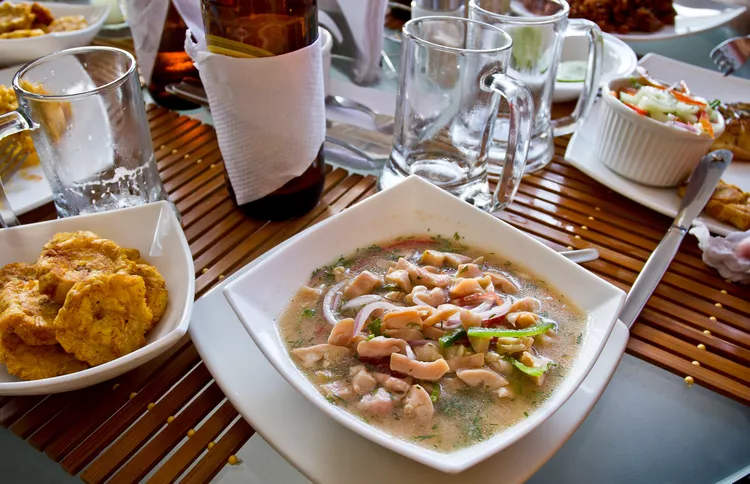
As you can imagine, the seafood on Galapagos Island is very fresh, and many fine restaurants satisfy hungry tourists. You’ll find many dining options in the island’s significant centers, many of them hotel-related, such as Santa Cruz’s Finch Bay Restaurant, which blends local Ecuadorian cuisine with international flair. Another popular restaurant is FraFre GastroBar, where the fish has a local flavor and is popular with locals and tourists. You’ll also find more casual restaurants, such as the humorously named Booby Trap, which serves fish tacos and pizza on Isabela Island alongside beautiful waterfront views.
If you’re looking for a memorable meal in Quito, Zazu is Ecuador’s only Relais & ch<e:1> restaurant. For a casual experience, head to peer restaurant Zfood, which perfectly replicates the Hamptons-style fish-shack atmosphere, where seafood reigns supreme. At Urko, chef/owner Daniel Maldonado showcases Ecuadorian ingredients and flavors. Go to the tasting menu to get the whole feel of what he calls the local cocina.
Things to do
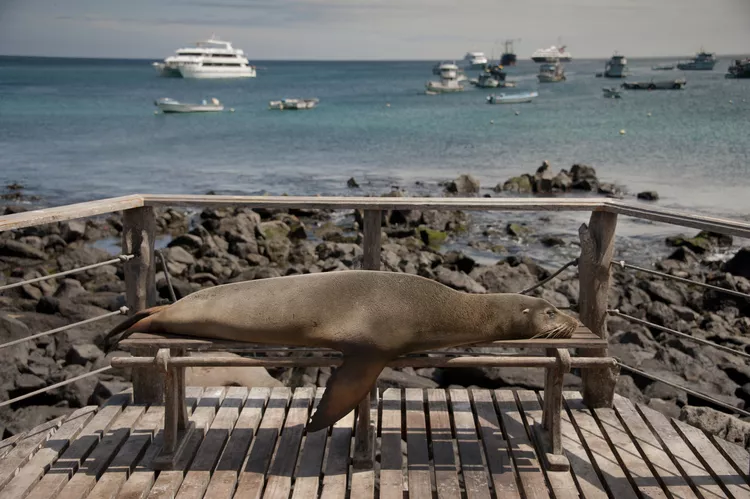
In addition to observing amazing animals above and below the water, you can add many other dramatic landscapes to your adventure. If you want to skip the island, you can coordinate visits to these attractions yourself. However, if you are on a cruise ship, you may have to follow a pre-planned itinerary.
Across the island, you can enjoy the white-sand beaches of beaches such as Tortuga Bay and Port Villamil or take the adventurous route to hike to the top of Sierra Negra. This active shield volcano last erupted in 2018, offering a dazzling show for offshore boats. Suppose you want to do something a little more modest. In that case, you can pay your respects at the Charles Darwin Research Station in Puerto Ayora, which has been used as a scientific base since 1964. Visitors have access to exhibition halls, gardens, and a public library.
Best islands to visit
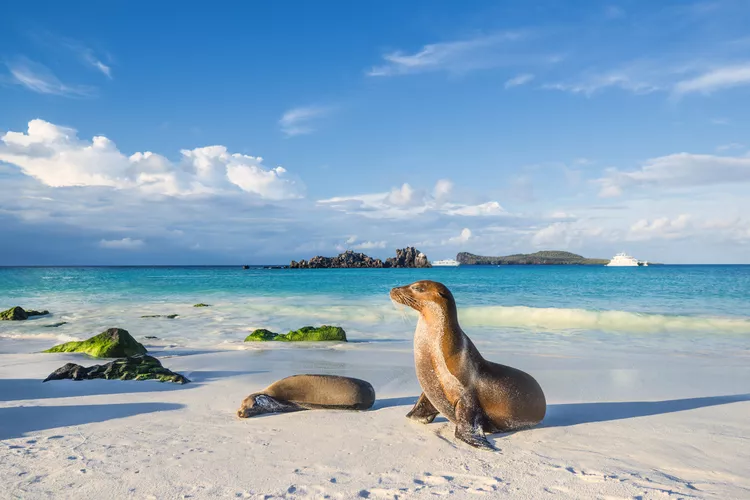
The tropical archipelago comprises 127 islands. However, only about 20 tourists visit regularly, and only four have significant populations. Isabela Island is the largest of the islands. However, despite its size, it is less populated than Santa Cruz Island, the most populous island with about 12,000 residents, located between Puerto Ayora and Santa Rosa. When you fly to the Galapagos, you’ll arrive via Baltra Island, a short ferry ride from Santa Cruz. Meanwhile, the provincial capital is located on the island of SAN Cristobal.
Booking a life-on-board tour will give you more opportunities to see the many different islands that make up these fascinating islands. However, suppose a particular attraction or animal catches your attention. In that case, look for specific locations such as Bartolominoi, known for its volcanic rock formations such as Summit Rock, and Espanola Island, where you’ll find the nesting grounds of the Punta Suarez Wave albatross. If you’re interested in the history of human discovery, Floriana is the first island to be visited by humans. Here, you can hear the stories of many sailors in these waters and learn about the fascinating postal system they built with a simple wooden barrel. Birders especially like the island of Genovisa, where frigate birds and red-footed boobies are often seen. With its sparse vegetation, Fernandina Island is another popular spot for Galapagos penguins and flightless cormorants.
Packing technique
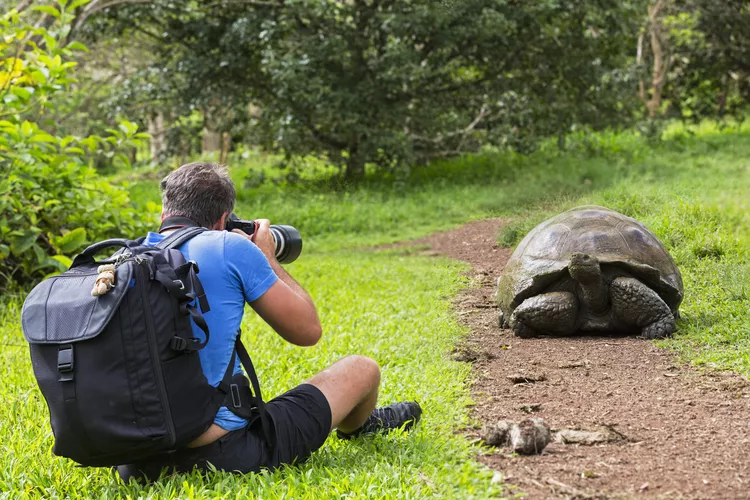
A trip to the Galapagos is a big adventure, so you should be prepared with the right clothes and tools to face the elements. Once you get to the island, you may need help finding what you need – especially if you spend most of your time at sea – so we’ve broken it down into basic categories and created a packing list to get you started.
Clothes
Basic supplies are available in small shops on Santa Cristobal and Santa Cruz islands. However, prices are high, and selection is limited. It’s best to bring the essentials. These include sturdy closed-toe walking shoes with durable soles. While land trips are usually short and the roads are smooth, you may walk over jagged volcanic rocks and other obstacles from time to time. However, you must also wear sandals or flip-flops around town and on board. Leave your heels at home, especially if you’ve booked a boat trip. Even the most luxurious boats have narrow, steep staircases that make it nearly impossible to navigate safely (or gracefully) in high heels.
You’ll also be glad to have rain gear and good weather to protect your camera. You will travel on boats and dinghies, and showers may occur anytime. If you encounter wet weather while exploring an island, there is nowhere to take shelter from the rain.
Health and comfort
Stock up on insect repellent, waterproof, high-SPF sunscreens. As you might have guessed, Ecuador is located on the equator, which amplifies the intensity of the light, and most Galapagos excursions are fully exposed to sunlight. We also recommend buying coral reef-safe sunscreen to help protect corals, animals, and the waters around the island. A hat with a brim is recommended for protection from the sun when on land excursions. Sun-protective clothing is also helpful if you plan to go on kayaking and snorkeling trips. When the water temperature is low, wetsuits are provided. If you have fins, masks, and breathing tubes that you like, bring them with you. Snorkeling equipment is available but varies in quality and cleanliness.
The sea is usually calm, and the captain carefully chooses a protected anchorage. However, if you are prone to motion sickness, pack some larvae. Prescription preventative measures like scopolamine patches are also effective. Please note that scopolamine is not generally sold in Latin America. Please bring a reusable water bottle to fill it up throughout the day and reduce plastic waste.
money
There are ATMs on both Santa Cruz Island and Santa Cristobal Island, but they may run out of cash, so bring some cash with you for tips. Shops and restaurants also often accept credit cards. The official currency of Ecuador is the US dollar.
What not to bring
Introducing exotic plant species is considered the most significant environmental threat to the Galapagos Islands, so don’t bring fruits, vegetables, or plants. Anything that may have seeds or spores attached to it, such as the soles of your shoes and any outdoor gear or camping equipment, should be thoroughly cleaned and inspected before being brought to the island. The threat of invasive plant species is so significant that visitors arriving at Galapagos must sign an affidavit stating they will not get any food, animals, seeds, or dirty camping gear.
Park fee
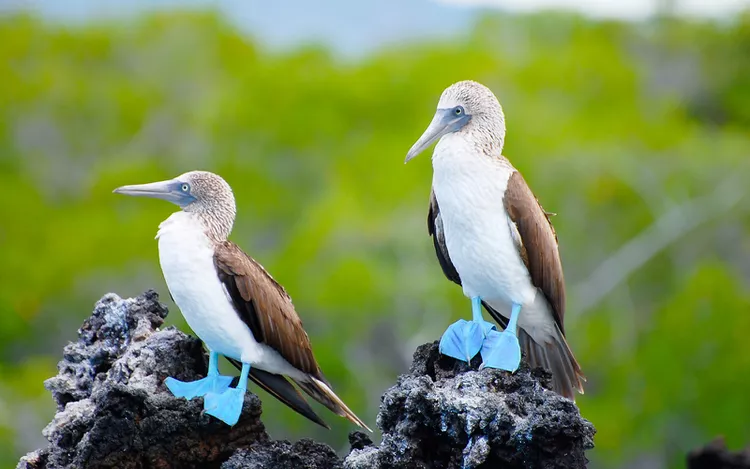
2012, Ecuador’s then-president Rafael Correa abolished fees for national parks and protected areas. However, the exemption does not cover Galapagos National Park. Still, it requires an entry fee of $100 per person, which can only be paid in cash upon arrival at any airport in the Galapagos Islands. In addition, each visitor must purchase a $20 transit card, which can only be paid in cash at the airport. A transit card is an immigration control measure, so all visitors must purchase a transit card upon arrival at the airport and return it upon departure. If you book a tour, your travel agent may be able to handle this for you, but it’s best to ask ahead of time.
Before visiting the Galapagos Islands
As you look forward to your trip, you may look for books and movies to get into the spirit of the adventurous naturalist. Here are some of our reading and viewing suggestions for your trip.
My Father’s Island by Johanna Angermeyer: This book, published in 1998, tells the story of the author’s German ancestors, who were among the first to settle on Santa Cruz Island. Their challenges and triumphs are humbling and provide a valuable perspective for Galapagos. Members of the Angemeyer family still live on Santa Cruz Island, where they run the Angemeyer Waterfront Hotel.
Events in the Galapagos: Satan Comes to Eden: This documentary, released in 2013, skillfully splices video footage, letters, and other archival material to tell the story of an actual murder mystery involving a self-proclaimed Baroness, her lover, and other settlers on Floriana Island in the 1930s. Cate Blanchett narrates one of the main characters.
Charles Darwin’s On the Origin of Species: This classic book and its author will be cited repeatedly as you browse the Galapagos. Read Darwin’s groundbreaking theory of evolution, partly inspired by his observations on the archipelago.
